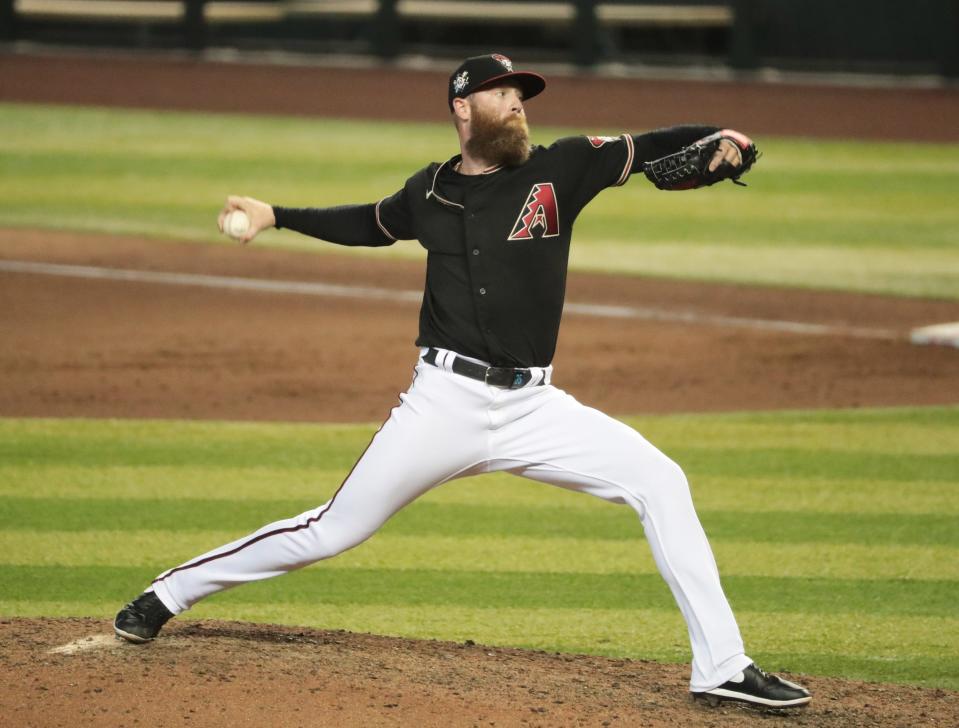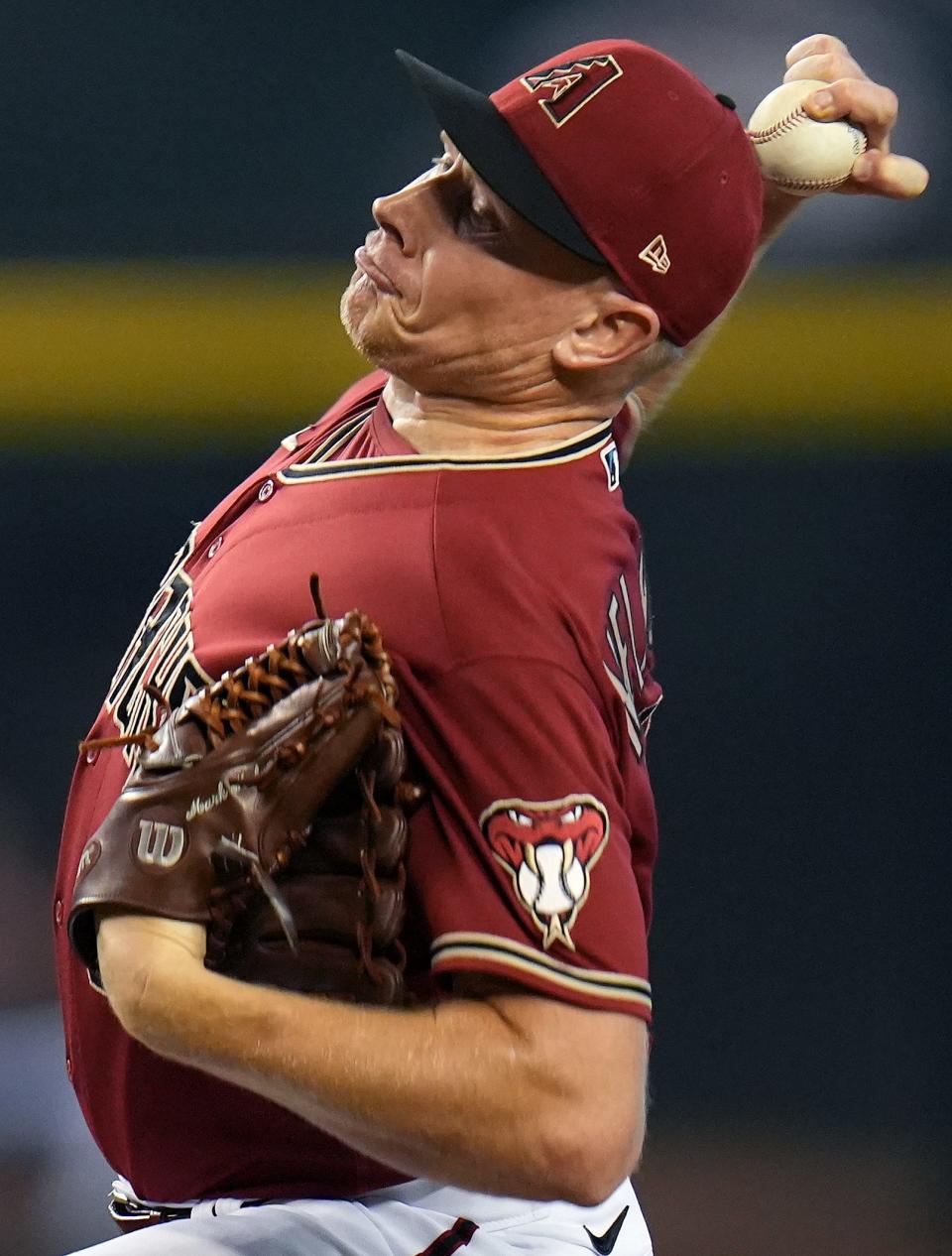How the Diamondbacks can solve their bullpen problem this offseason
SAN DIEGO — As reliever Ian Kennedy trudged off the field on Tuesday night — and as the San Diego Padres celebrated giddily down the right-field line — an already obvious reality was further hammered home. The Diamondbacks have work to do with their bullpen this winter.
For anyone who has followed the organization for any period of time, this comes as little surprise. For years, the Diamondbacks have entered the offseason in need of late-inning help. In many of the ensuing seasons, they have still found themselves without reliable options.
There are reasons that help explain why this has been a recurring problem — and reasons to believe the Diamondbacks might finally be positioning themselves to construct a better bullpen.
First and foremost, while other teams are developing reliable, power arms, the Diamondbacks have had difficulty churning out their own. Archie Bradley was a hard-throwing, homegrown reliever. Andrew Chafin was another. It is hard to name many others beyond them.

Without reliable internal options, the Diamondbacks have had to look elsewhere for help. But, by and large, they have done so without opening their wallet.
In part, that is because the relief market is a tricky place to spend. It takes little more than a glance at the history of free-agent reliever contracts to recognize how many of them tend to go south quickly.
When the expensive ones blow up on teams, as many do, it can be a tough setback for those clubs with a payroll the size of the Diamondbacks. And when a team opts not to pursue the pricier, more reliable options, it ends up signing pitchers like Fernando Rodney, Greg Holland, Joakim Soria and Mark Melancon.
Some of those relievers, all of whom the Diamondbacks have signed over the past five years, have turned out better than others. But when going with cheaper, aging veterans, the odds of getting a good one feel something like a coin flip.
Then there is the fact that young, controllable relievers tend to bring back a king’s ransom in trades. A few years ago, the Mariners moved Edwin Diaz in exchange for the sixth overall pick in the previous draft, outfielder Jarred Kelenic, plus the opportunity to shed roughly $100 million of Robinson Cano’s contract. Before that, the Phillies moved Ken Giles in exchange for five pitching prospects, at least two of whom were highly regarded.
Educating an ace: How Zac Gallen has evolved into one of MLB's top pitchers
'Bulletproof': How a harrowing cancer journey shaped this Diamondbacks coach's mentality
But there are some reasons for the Diamondbacks to be hopeful. The club appears to have a handful of interesting options who either are in the majors already or soon to be arriving. Right-handers Kevin Ginkel and Luis Frias both throw in the upper-90s and have had varying degrees of success in the majors this season. Right-hander Drey Jameson, who is currently a staring pitcher for Triple-A Reno, has some scouts convinced he will be a lights-out closer.
The club has another thing going for it: It has depth from which to trade. That depth, most notably, is in the outfield, where the Diamondbacks have what appears to be more capable young players than they have positions available — plus more in Triple-A. That surplus could come in useful if they wanted to try to trade for an established reliever in the winter.

Last offseason, the Diamondbacks gave Melancon a two-year, $14 million deal, the largest contract given to a reliever in club history. He was coming off a year in which he posted a 2.23 ERA and led the majors with 39 saves. Kennedy received a one-year, $4.75 million guarantee after posting a 3.20 ERA last year.
Melancon has since set a franchise record with 10 relief losses. Kennedy’s results have been better, but his batted-ball data indicates he has been shakier than his 3.60 ERA would suggest. Melancon lost the closer’s role last month; Kennedy, who was the successor, might have lost it on Tuesday.
The Diamondbacks’ bullpen leads the majors with 33 losses; they are tied for 11th with 21 blown saves.
One thing is certain: There figures to be more urgency to solve the issue than in recent winters. The Diamondbacks appear to be on the verge of turning a corner. If they hope to become legitimate contenders, they will need to find answers in the late innings. How they do that will be an interesting development to follow come winter.
Reach Piecoro at (602) 444-8680 or nick.piecoro@arizonarepublic.com. Follow him on Twitter @nickpiecoro.
This article originally appeared on Arizona Republic: Bullpen again an offseason renovation project for D-Backs

